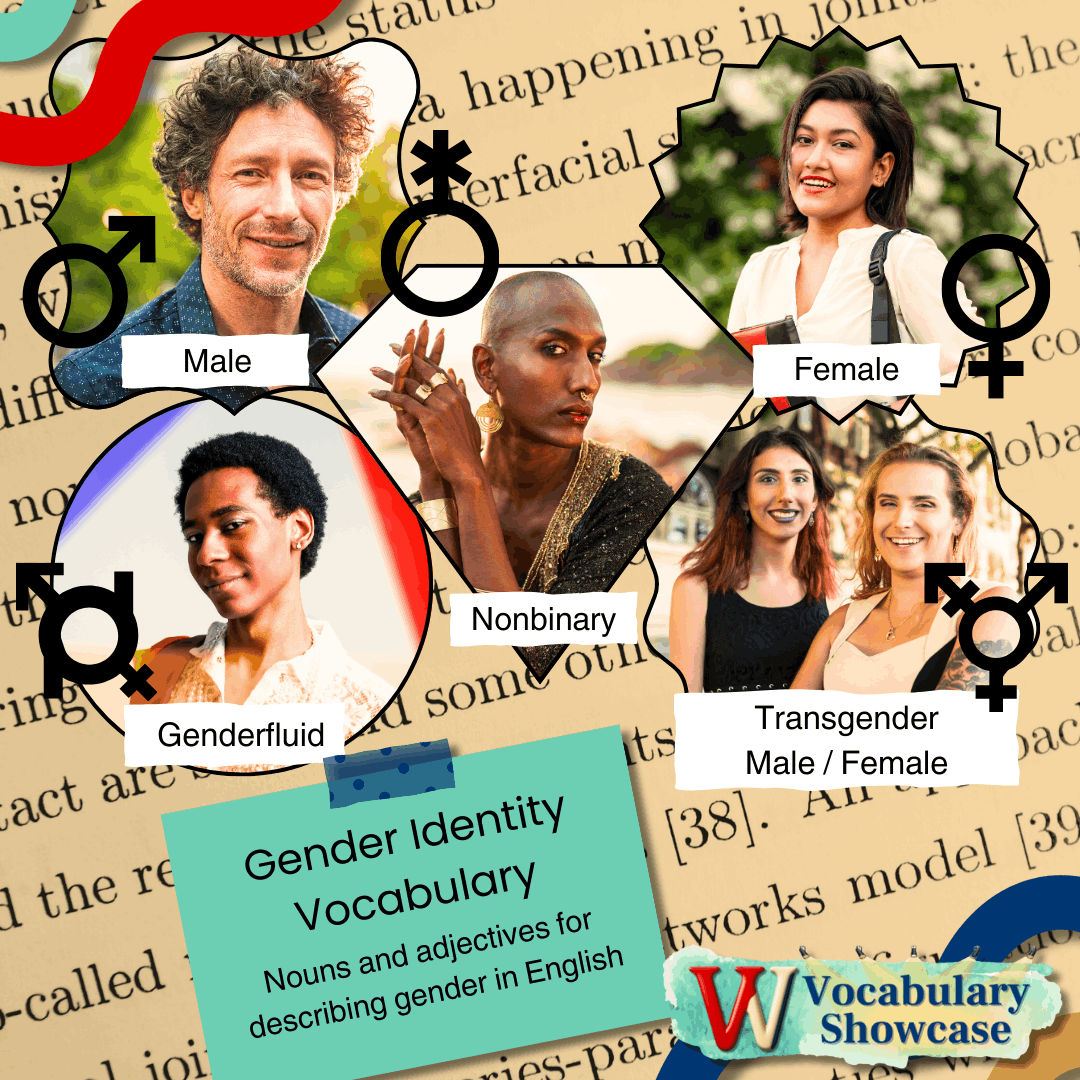Vocabulary Showcase: Gender Identity Vocabulary
Welcome to a gender identity exploring Vocabulary Showcase! If you have ever been a little unsure of the correct words to describe people’s genders, or the correct prepositions, I’m here to help.
Gender Descriptions in English
These are the common adjectives, nouns and pronouns we use to describe our genders in English. For the following descriptions, nonbinary people don’t give themselves a male or female gender description, and genderfluid people feel that there are different days and times when they are at different places on the scale between male, neutral, and female.
Gender adjective - noun - pronoun
Male - a man - he
Under 18 male - a boy - he
Female - a woman - she
Under 18 female - a girl - she
Transgender male (a person living as a man) - a man - he
Under 18 transgender male - a boy - he
Transgender female (a person living as a woman) - a woman - she
Under 18 transgender female - a girl - she
Genderfluid - a genderfluid person - they*
Under 18 genderfluid person - a child - they*
Nonbinary - a nonbinary person - they*
Under 18 nonbinary person - a child - they*
* Note: If you don’t know a person’s gender identity, you can use ‘they’ as a pronoun for anybody because it is gender-neutral (it has no gender). Many genderfluid and nonbinary people prefer different pronouns but will usually let you know how to describe them. I also recommend referring to young people you might think are genderfluid or nonbinary as ‘a child’ unless they ask you to use a different description.
The Scientific Opinion on Gender
Many languages are updating their vocabulary with new words to describe different gender identities in modern times, but that isn’t because gender identities have changed over time. It’s more like we have always varied a lot as a species in many ways, including gender, but people born differently to the 99% have always had to keep those things secret (something people do not tell others). Our progress in understanding ourselves, and learning how to listen to each other with open minds, is why we are changing our languages to support and represent everyone. That’s a truly beautiful thing in my opinion.
Biologists (scientists for living things) have known for a long time that gender is not binary (just male and female). Biologically, we are all female at first, and then hormones are introduced to us when we are inside our mothers, and they can change our bodies. Most of the time, the result of that is people being born with either male or female bodies, but people are also born intersex, with body parts that are male and body parts that are female. As a psychologist, I can also tell you that we really don’t know very much about gender and the brain! There are some extremely small differences between male and female brains, but they are nothing like what we would expect from a society that has very clear differences between men and women. We know even less about the brains of intersex, trans, genderfluid, and nonbinary people. We just don’t have enough research yet!
So, what do we do when we don’t have much science to tell us about gender in brains? In my opinion it’s simple: we listen to the millions of people who experience this every day of their lives, and we treat them with respect. In time, science will teach us all more about gender, and why we are the way we are.
What About Children?
Nobody had the right to tell me who I was when I was a child; it was for me to understand who I was. I can tell a child they are a frog every day of their lives, but that does not make them a frog. This is how I feel about adults and children; I don’t have the right to tell anyone who they are, only they know that. So, I just listen.
Summing Up
To simplify things, remember these tips:
if someone is male or transgender male - use ‘man’ and ‘he’
if someone is female or transgender female - use ‘woman’ and ‘she’
a transgender male is also a male
a transgender female is also a female
it’s best to use the pronoun ‘they’ with nonbinary and genderfluid people until they ask for a different pronoun.
History is full of people quietly hiding who they are because they are afraid. Let’s listen to people and let them tell us who they are.
A Note on Politics
I achieved a distinction in my Masters of Science (MSc) in Forensic Psychology, and a lot of that is biology. I worked and studied in human sciences for many years, and I have never seen any scientific evidence that supports some current political beliefs about gender being binary (just male or female). If people are telling you this, I ask you to remember that this is an unscientific, unsupported, political opinion with no evidence or proof. It’s my opinion that politics focused on choosing who to hate is not politics I want to support.

